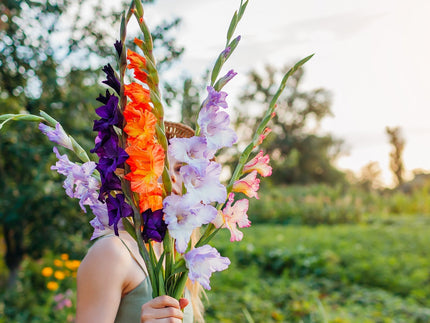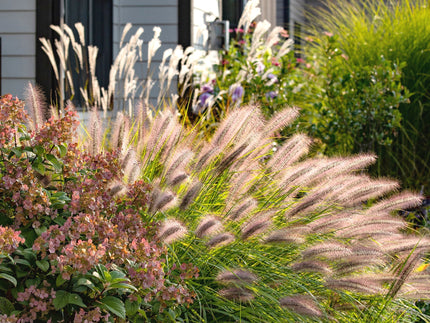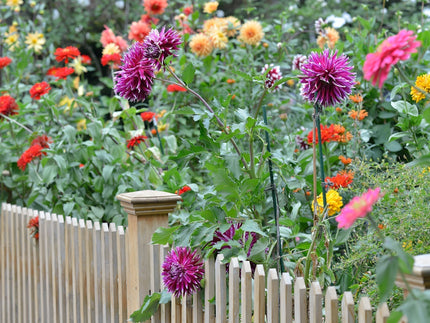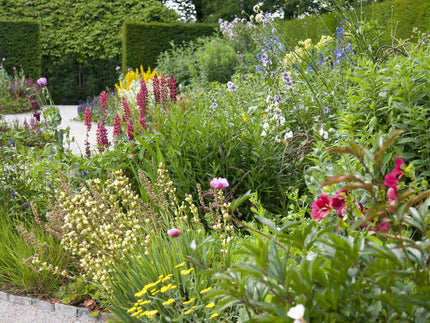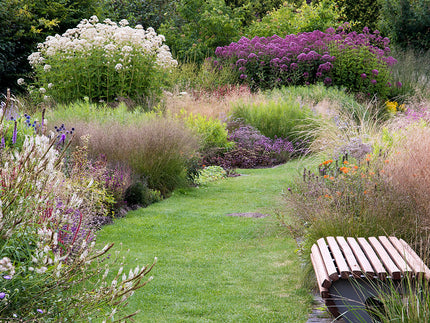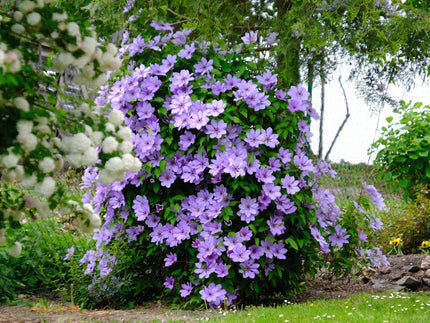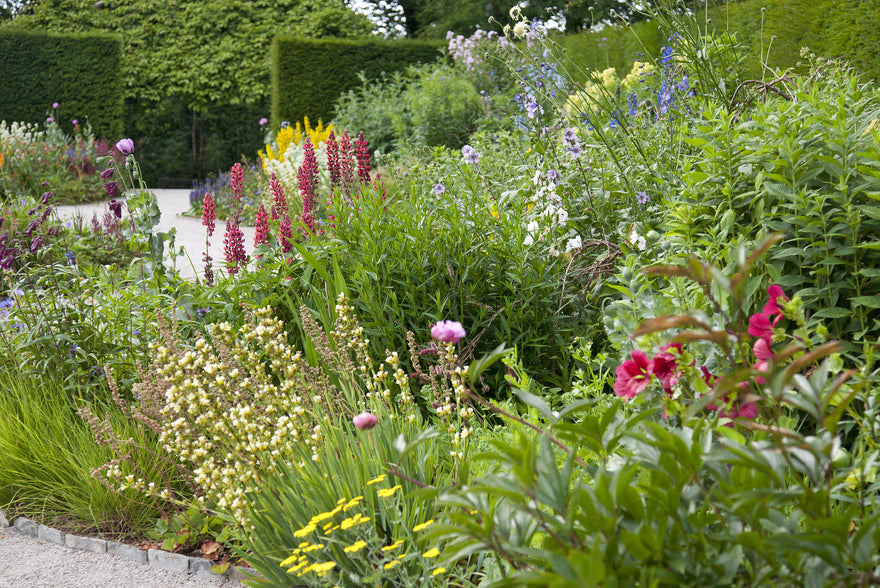
UK garden trends for 2025
As 2025 approaches, the British gardening landscape is evolving, bringing with it new trends that harmonise tradition with modernity. Whether you're a seasoned garden enthusiast or a novice green thumb, it's an exciting time to plan for the year ahead. Flower bulbs and perennials are at the forefront of this horticultural renaissance, promising vibrant colours and low-maintenance beauty. Join us as we delve into the UK's garden trends for 2025 and discover how you can revitalise your outdoor space.
The rise of flower bulbs: Past meets present
-
A historical favourite
Bulbs have long been a staple in British gardens. These resilient, self-sustaining plants have graced our landscapes for centuries, offering reliability and awe-inspiring displays each year. From tulips to daffodils, bulbs are synonymous with the quintessential English garden.
-
Embracing biodiversity
In 2025, the focus is shifting towards biodiversity, and bulbs are leading the charge. Gardeners are increasingly looking to attract pollinators like bees and butterflies, and bulbs are perfect for the job. Species such as alliums and crocuses not only add visual interest but also promote a healthy ecosystem by providing vital nectar sources early in the growing season.
-
Extended blooms
Another key trend is the selection of bulbs that offer extended flowering periods. Gardeners no longer want a quick burst of colour; they're seeking prolonged displays that provide continuous enjoyment. Varieties like the long-lasting Tulip 'Queen of Night' and reblooming daylilies (Hemerocallis) are perfect choices for creating a garden that remains vibrant throughout the seasons.
-
Layered bulb planting
Layered bulb planting, also known as lasagna planting, is gaining popularity. This technique involves planting multiple layers of bulbs in a single container or garden bed so that as one layer finishes its bloom, the next begins. This method ensures a succession of blooms and maximises the use of available space—an ideal solution for smaller urban gardens or balconies.

The enduring appeal of perennials
-
Perennials: The backbone of the British garden
If bulbs provide the seasonal highlights, perennials form the backbone of your garden design. These steadfast plants return year after year, requiring minimal intervention once established. From classic lavender to elegant hostas, perennials bring structure, texture, and enduring beauty to any garden.
-
Colour palettes and foliage
In 2025, the trend is leaning towards experimenting with bolder colour palettes and selecting perennials with striking foliage. Hues of deep purples, vibrant reds, and bright yellows are set to dominate British gardens. Plants like the fiery Crocosmia, the dramatic dark-leaved Heuchera, and the cheerful Rudbeckia are fantastic additions for those looking to inject a pop of colour and texture into their gardens.
-
Native and drought-resistant varieties
As climate change becomes an ever-pressing concern, 2025 is seeing a significant shift towards sustainability in gardening practices. Gardeners are increasingly favouring native and drought-resistant perennials, appreciating their adaptability to local conditions and their lower requirement for water and maintenance. British natives such as the hardy Geranium 'Rozanne' and the long-blooming Echinacea purpurea (purple coneflower) not only withstand less-than-ideal conditions but also support local wildlife.
-
Layered perennial borders
Layering isn't confined to bulbs. Perennial plantings are moving towards more complex, layered designs that mimic natural ecosystems. This approach not only creates striking visual interest but also fosters healthier plants by promoting natural pest control and improving soil health. Think of combining taller perennials like Delphinium and Echinops with mid-height fillers such as Nepeta and shorter ground covers like creeping thyme or Alchemilla mollis. This multi-tiered approach not only maximises space but also enhances the visual depth and interest of your garden borders.

Cutting gardens: Bringing the outdoors in
Another trend for 2025 is the resurgence of cutting gardens. While not a new concept, their popularity is growing as more people seek sustainable and budget-friendly ways to enjoy fresh flowers indoors. British cutting gardens primarily consist of bulbs and perennials that provide an array of blooms perfect for floral arrangements.
Bulbs like gladioli and dahlias, alongside perennials such as lupins, Shasta daisies, and asters, are excellent for cutting gardens. They not only allow you to enjoy the beauty of your garden both inside and out but also reduce the need to purchase commercially grown flowers, which often have a significant environmental footprint.

The incorporation of technology
-
Smart gardening solutions
Technology continues to innovate the way we garden, and 2025 is set to see a rise in smart gardening solutions. From automated watering systems to app-controlled garden lighting, these advancements allow for more efficient and effective garden management. Smart sensors that monitor soil moisture levels and weather conditions help ensure your bulbs and perennials receive optimal care, reducing water waste and promoting healthier plant growth.
-
Virtual garden planning
With the advent of sophisticated garden planning apps, designing your garden has never been easier. These tools allow you to visualise different plant combinations, experiment with colour schemes, and even predict how your garden will evolve over time. By inputting preferences such as light levels, soil type, and desired bloom periods, you can receive tailored suggestions—perfect for selecting complementary bulbs and perennials.

Sustainable practices
-
Organic gardening and zero waste
As environmental awareness grows, sustainable gardening practices are becoming more mainstream. In 2025, there will be a marked increase in organic gardening methods, with an emphasis on zero waste. Home composting, mulching, and the use of organic fertilisers will be prevalent, and gardeners will be encouraged to recycle plant materials back into the garden. By eschewing chemical pesticides and synthetic fertilisers, gardens will become healthier havens for both flora and fauna.
-
Water conservation
With climate change bringing more unpredictable weather patterns, water conservation is a critical concern. Perennials that thrive on minimal water, combined with bulbs that are planted deep enough to access moisture from lower soil levels, will be essential components of a water-wise garden. Mulching not only helps to retain soil moisture but also suppresses weeds and improves soil health, making it an invaluable practice for sustainable gardening.
-
Rain gardens
Rain gardens are another innovative solution to water management, particularly in areas prone to heavy rainfall or flooding. By strategically planting water-tolerant bulbs and perennials in shallow depressions, you can create a garden that helps to divert and absorb excess rainwater. Plants like daylilies, and ornamental grasses not only handle soggy conditions well but also add beauty and biodiversity to your landscape.

Customisable outdoor living spaces
2025 will see a continued blurring of the lines between indoor and outdoor living. UK garden spaces are becoming extensions of the home, with a focus on customisation to meet personal preferences and lifestyles. This includes integrating comfortable seating areas, outdoor kitchens, and even home offices set amidst lush greenery. Plants are used not just for aesthetics but to create functional spaces that reflect individual tastes.
Edible landscaping
Mixing edible plants with ornamental ones is another growing trend. Perennials such as rhubarb, asparagus, and berries can coexist beautifully with decorative plants, providing both a visual feast and a culinary bounty. Bulbs like garlic and onions also play dual roles, offering both practical culinary uses and attractive garden aesthetics with their Allium blooms. This blending of form and function not only makes your garden more productive but also enhances its visual appeal.

Community and connectivity
-
Garden sharing and community gardens
In 2025, the sense of community continues to strengthen through gardening. Shared and community gardens are gaining traction, especially in urban environments where space is limited. These gardens foster a sense of belonging, provide fresh produce, and contribute to mental well-being. By pooling resources and knowledge, gardeners of all experience levels can benefit and learn from one another.
-
Gardening workshops and social media
Gardening workshops, both in-person and online, are growing in popularity. Social media platforms and gardening apps provide a space for enthusiasts to share tips, showcase their gardens, and connect with like-minded individuals worldwide. Whether you're looking for inspiration or practical advice, the gardening community is more accessible than ever.

Conclusion
The garden trends for 2025 reflect a harmonious blend of tradition, innovation, and sustainability. By incorporating bulbs and perennials, embracing smart technology, and prioritising sustainable practices, UK gardeners can look forward to creating vibrant, resilient spaces that offer beauty and functionality year-round. As we move into this new era, the focus on biodiversity, climate adaptability and community will ensure that our gardens not only flourish but also contribute positively to the environment and our well-being.
Embrace these trends and transform your garden into a sanctuary of colour, life, and inspiration in 2025. Whether you’re planting layered bulbs, designing a cutting garden, or exploring native perennials, there’s no better time to cultivate a greener, more vibrant world right outside your door.
































































































































































































